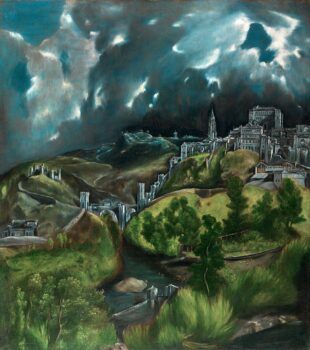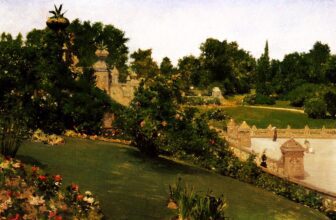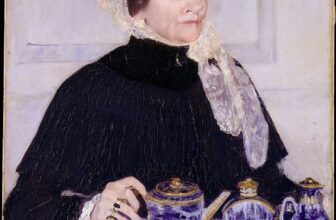What is the Meaning of View of Toledo Painting
A Masterpiece of Vision and Symbolism
Few works in the record of art history evoke the kind of mystique and emotional intensity as View of Toledo by El Greco. Painted around 1596–1600, this hauntingly beautiful landscape of the Spanish city of Toledo is more than just a representation of geography, it is a reflection of the artist’s spiritual vision, psychological insight, and stylistic rebellion. Revered as one of the first truly expressive landscapes in Western art, View of Toledo is a masterpiece that bridges the late Renaissance with the dawn of modern expressionism.
In this in-depth analysis, we will explore what View of Toledo is all about, how and why it was painted, its symbolic significance, artistic techniques, and its lasting place in the canon of Western art. We will also discover where this celebrated painting is housed today and how its legacy continues to influence both scholars and artists.
What Is View of Toledo?
View of Toledo is a landscape painting by Doménikos Theotokópoulos, better known as El Greco (meaning “The Greek”), a master of Spanish Renaissance art. The painting depicts a dramatic, almost surreal rendering of the Spanish city of Toledo, perched on a hill under a stormy sky. Unlike typical landscapes of the Renaissance, which aimed for harmony, balance, and realism, El Greco’s View of Toledo is characterized by its emotional intensity, elongated forms, swirling clouds, and vivid contrast between darkness and light.
The painting is relatively modest in size, 47.75 inches by 42.75 inches (approximately 121.3 cm x 108.6 cm), but its impact is vast. Toledo’s contours are exaggerated and rearranged, giving the scene a sense of transcendence and metaphysical mystery. Rather than merely portraying a cityscape, El Greco transforms Toledo into a spiritual entity, suspended between heaven and earth.
Who Was El Greco?
El Greco was born in 1541 in Crete, then part of the Republic of Venice, and trained as an icon painter in the Byzantine tradition. He later moved to Venice and Rome, where he absorbed the styles of the Italian High Renaissance and Mannerism. In 1577, he relocated to Spain, where he would spend the rest of his life, primarily in Toledo.
At the time, Toledo was the religious and spiritual heart of Spain, a city rich in Christian mysticism and ecclesiastical power. Though Madrid had become the political capital, Toledo remained a symbol of divine authority. This aura of sacred presence resonated deeply with El Greco, whose unique artistic vision was often misunderstood during his lifetime but has since earned him recognition as one of the most innovative painters of the Western tradition.
How Was View of Toledo Painted?
El Greco’s technique in View of Toledo departs from the norms of his contemporaries. The painting was created with oil on canvas, a medium that allowed him to manipulate color and texture with dramatic flair. El Greco used a dark, almost monochromatic palette dominated by greens, blacks, and grays, contrasted with bursts of brilliant white and blue in the sky.
The brushwork is expressive rather than precise, lending the painting a turbulent, almost ecstatic energy. The clouds seem to swirl and seethe with supernatural power, while the city itself is painted with elongated, twisted shapes, almost like living beings reaching upward toward the heavens.
One of the most striking aspects of the painting is its rearrangement of the city’s topography. Scholars have long noted that the geography is not accurate, landmarks are shifted, compressed, or elevated. This was a deliberate choice. El Greco was not interested in cartographic precision but in metaphysical truth. His aim was to convey the spiritual essence of Toledo, not its literal form.
What Is Happening in the View of Toledo Painting?
At first glance, View of Toledo appears to be a quiet, almost foreboding depiction of a city before a storm. The dramatic sky looms ominously over the landscape, casting an eerie light on the city below. Toledo is perched dramatically on a green hill, its buildings clustered together as though huddling for protection from the impending tempest.
The viewer’s eye is drawn along the curve of the landscape toward the Alcázar, the fortress-like palace that dominates the skyline. Nearby, the Cathedral of Toledo can be seen, though its position is shifted from its actual location in the city. This reordering serves to emphasize the spiritual over the secular.
There are no human figures in the painting, yet the landscape pulses with life. The buildings and clouds seem to move and breathe. The overall effect is both unsettling and transcendent, a city caught in the liminal space between divine revelation and apocalyptic reckoning.
Symbolism and Interpretation
El Greco’s View of Toledo is saturated with symbolic meaning. At its core, the painting is a meditation on the relationship between the earthly and the divine. The dark clouds represent both divine wrath and spiritual intensity, evoking the biblical imagery of judgment and transformation. The city, bathed in an unnatural, ethereal light, appears to be in a state of spiritual elevation or transfiguration.
The central position of the Alcázar and the Cathedral, two symbols of temporal and ecclesiastical power, may suggest a merging of earthly rule with divine will. Yet their distorted forms and surreal placement indicate that this merger is not harmonious but fraught with tension.
Some art historians interpret the painting as a reflection of El Greco’s own inner turmoil. A deeply spiritual man, he lived in a time of intense religious conflict and societal change. Spain was undergoing the Counter-Reformation, a period marked by strict Catholic orthodoxy and mystical fervor. View of Toledo could be read as a visual prayer, a cry for divine guidance in a world overshadowed by chaos and uncertainty.
There is also a personal layer to the symbolism. El Greco had a complicated relationship with the city of Toledo. Though he lived there for most of his adult life and found patronage among its religious elite, he often felt marginalized by the artistic establishment. In View of Toledo, he offers a powerful, perhaps idealized version of the city, one that reflects his longing for spiritual unity and aesthetic transcendence.
What Type of Art Is View of Toledo?
View of Toledo is typically classified as a Mannerist painting, a style that emerged in the late Renaissance as a reaction to the harmony and balance of High Renaissance art. Mannerism is characterized by elongated forms, artificial compositions, and heightened emotion, all traits evident in El Greco’s work.
However, View of Toledo defies simple classification. In many ways, it is a precursor to later artistic movements such as Romanticism and Expressionism. Its emotional intensity, dramatic contrasts, and abstracted forms prefigure the works of artists like J.M.W. Turner, Vincent van Gogh, and even modern abstract painters. The painting’s psychological depth and visionary quality make it one of the most modern works of its era.
This genre-defying nature is part of what makes View of Toledo so enduring. It is not just a landscape, but a spiritual and emotional journey, a visual symphony of color, light, and form that transcends time and category.
Where Is View of Toledo Painting Located Today?
Today, El Greco’s View of Toledo resides in the permanent collection of the Metropolitan Museum of Art in New York City. It is one of the museum’s most treasured works and is displayed prominently in the European paintings section.
The painting was acquired by the Met in 1902, during a period when interest in El Greco was undergoing a dramatic revival. After being largely forgotten for centuries, El Greco was rediscovered by 19th-century Romantic painters and 20th-century modernists who saw in his work a kindred spirit. Since then, View of Toledo has been studied, revered, and endlessly interpreted by generations of artists, critics, and scholars.
El Greco’s View of Toledo is more than a painting, it is a vision. Through swirling skies, distorted forms, and a landscape alive with spiritual tension, El Greco offers a window into a world shaped not by the laws of nature, but by the forces of faith, emotion, and divine revelation.
This masterpiece challenges our notions of realism, beauty, and meaning. It reminds us that art is not merely a mirror of the world, but a means of transcending it. In View of Toledo, El Greco does not just depict a city, he reimagines it, infusing it with the mystery and majesty of the sublime.
As we stand before the painting today in the halls of the Metropolitan Museum, we are invited to enter that vision, to feel the storm in the sky, the pull of the hill, and the quiet yearning of a soul reaching for the eternal.




